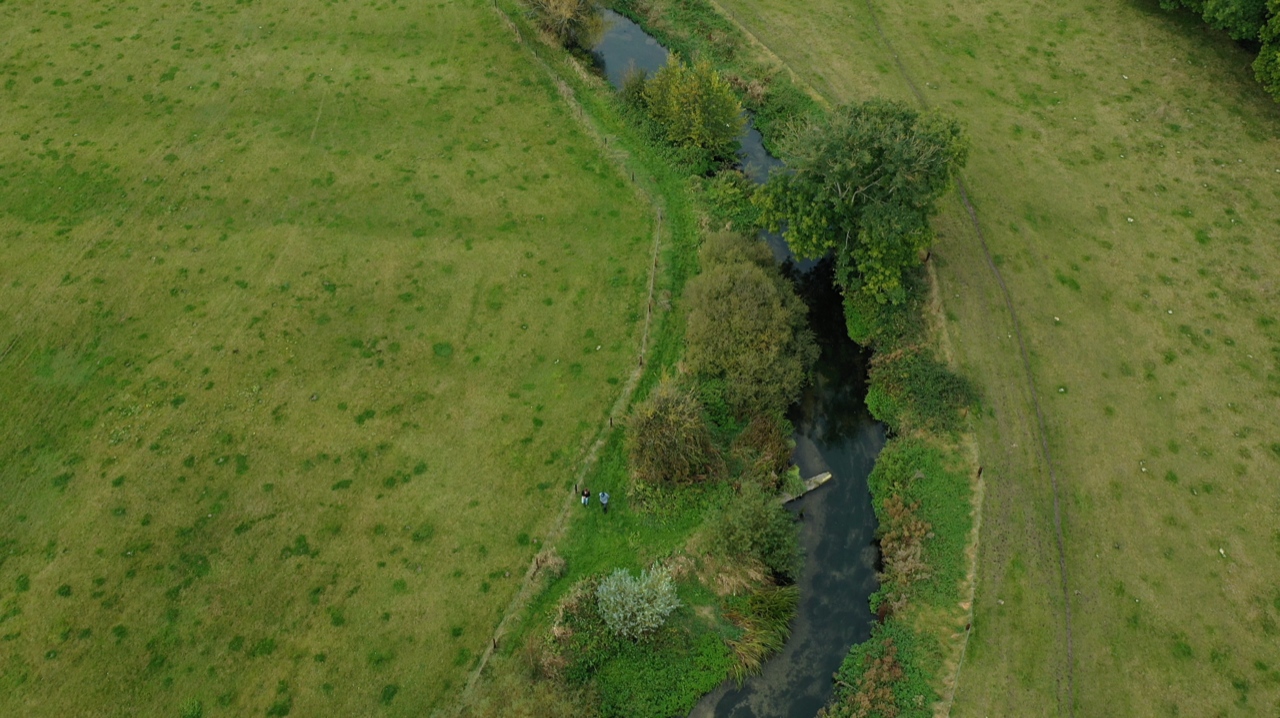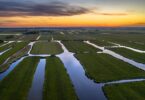Four hundred years since they were hunted to extinction, beavers are back in Britain.
Thanks to dedicated reintroduction efforts, these aquatic rodents are finally gaining ground – with hundreds of individuals now inhabiting waterways across the country.
Commonly referred to as ‘nature’s engineers’, beavers have an incredible ability to shape and reshape the landscape – with proven benefits for people and the planet. Beaver dams slow the passage of water in a river, creating ponds and wetlands that provide habitat for a plethora of species.
And their chopping, building, weaving, burrowing, and eating habits also have measurable impacts on water quality.
“Beaver dams, and the ponds they create, play a significant role in filtering and absorbing pollutants,” said Richard Brazier, University of Exeter Professor of Earth Surface Processes, in an interview with H2O Global News.
Brazier, who has been researching the impacts of beaver reintroductions in the UK for over a decade, says they can play a significant role in restoring the health of the UK’s freshwater systems.
According to the Environment Agency, only 14% of England’s rivers are in good condition, with one of the greatest threats being pollution from agriculture and industry. In the centuries since beavers were eradicated from the British countryside, the landscape has changed beyond recognition, with 70% of the land surface now set aside for farming.
The UK’s waterways have been diverted, dammed, dredged, and drained for centuries
The UK has also seen a 90% decline in wetland habitats over the past hundred years, which has reduced the landscape’s capacity to manage pollutants and extreme weather events.
Clearly something needs to change, and perhaps beavers, with their ability to alter landscapes for good, could be part of the solution.
“Most people in Britain have no idea of the water scarcity and quality issue that we are facing,” said Eva Bishop, Director at Beaver Trust, to H2O Global News. “We are in a climate emergency, with droughts and floods only expected to worsen, and beavers can help mitigate these risks.”
Beaver dams slow the flow of water during times of heavy rainfall, which can reduce flooding downstream. They also store and steadily release water downstream, helping retain water during times of drought, and recharge groundwater aquifers, which are an important source of irrigation and drinking water.
At the Wood Valley Farm in Cornwall, organic farmer Chris Jones, who introduced beavers on his land in 2017, says the ponds provided a lifeline during the prolonged drought that swept across the country in 2018.
“Before the beavers, water would flow through the farm in a matter of minutes – now it takes almost an hour,” Jones said in the documentary Beavers Without Borders.
But despite the benefits, beavers, being the ecosystem engineers that they are, can cause damage to crops or flood farmland that is set aside for grazing – putting them in conflict with landowners.

Beaver locations in Britain (Credit: Beaver Trust)
To reduce potentially negative impacts, many nature conservation authorities, such as NatureScot in Scotland, have adopted ‘active management’ measures such as tree guards, beaver-proof fencing, and the use of pipes to regulate water flow through dams.
Controversially, NatureScot also created a permit system for the lethal control of ‘problem’ beavers, despite them being afforded legal protection as a native species in 2019. This decision has not gone unchallenged, with NGO Trees for Life challenging the Scottish agency in court over the issue.
On the flipside, some feel that government must go a step further to protect farmers. In December last year, Scottish conservative MP Murdo Fraser, criticised NatureScot’s approach, saying that landowners should be financially compensated for the “significant financial losses” they are incurring due to “beaver damage”.
So far the Scottish government has stood steadfast in their decision not to provide financial compensation, although other countries like Germany do have such systems in place.
Clearly then, beaver reintroductions don’t go without teething problems, but they have been notably more peaceful than proposals to bring back more threatening species such as Lynx or Wolf.
A number of successful beaver ‘trials’ across the UK have also spurred public confidence in recent years. The River Otter Beaver Trial in Devon, which ran from 2015 to 2020, saw resounding support from the community, with 86% of 3000 respondents saying they wholeheartedly supported the project.
The Department for Environment, Food and Rural Affairs (DEFRA) also launched a consultation process last year to measure public sentiment on a national scale, with plans to use the results to inform a national beaver management framework.
It is hoped that this framework will be able to find a balance between the needs of landowners and wildlife – maximising benefits and minimising conflict.
Likely central to peaceful reintroductions will be further government support for farmers who are under immense strain due to labour shortages, soaring input costs, and Brexit trade deals.
Given that farmers are squeezed, rivers are in a dire state, and beavers’ former habitat is largely gone, rewilding the British countryside requires a pragmatic approach that considers both the ecological and socio-economic impacts of reintroductions.
Among the organisations providing practical solutions to help people live alongside beavers is Beaver Trust, a nature restoration charity run by a small team based in the UK.
To reduce conflicts with beavers and restore the health of our rivers, the Beaver Trust is campaigning for the creation of river ‘buffer zones’.
The UK’s waterways have been diverted, dammed, dredged, and drained for centuries, but buffer zones give rivers breathing room, helping reduce runoff, capture pollutants, and enhance biodiversity. They also give beavers more space to do their thing.

Aerial view of a river buffer (Credit: Nina Constable Media)
But in a small country like the UK where competition for land is high, expanding river buffers will require shifts in policy, public acceptance, and funding. Ultimately, it will require a change in mindset which, thankfully, seems to be gaining momentum.
“I have seen on my farm how buffers increase biodiversity, improve soil health, and build resilience – there are multiple benefits,” said Richard Bramley, a Yorkshire farmer and member of the National Farmers Union, in the new documentary On the Edge. “However, asking farmers to set aside more of their land needs long term commitment to public funding and wider support for what we value – so if that is more wetland, then that must be supported over the long term.”
While the future of beavers in the UK is still unclear, one thing is for sure – reintroductions have opened a much needed conversation about the future of land use in Britain.







